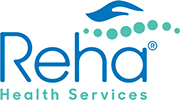History of Hijama
If you are trying to find” What is Hijama?” then we need to look where does come from. As an Arabic word, Hijama means ‘absorb’. Which is used in line with the origin of the word, is a treatment that absorbs toxins in the blood and removes them from the body in this way, accelerates blood circulation, is used for dirty blood in capillaries, and is used to open blockages in blood vessels.
This is a treatment by placing cups on certain parts of the body, and by making small incisions in some practices. It is aimed to absorb blood by means of negative pressure application, which is generally applied to the back, shoulder, and head area, by creating an incision in the skin. For the same purpose, there are negative pressure treatments called dry cupping and performed without making any incisions on the skin.
This treatment has an average of five thousand years of history. It can be observed that in the Eber Papyrus (1550 BC), which is the oldest known medical text in history, the application of cupping is mentioned.
Hippocrates BC, about the cupping method, which is known to be used as an important treatment method in Mesopotamian civilizations. It gives information on the years 460-377.
In the 20th century, Hijama therapy, which was started to be applied less in line with the development of modern medicine and the emphasis on drug therapy, emerges as a more researched and applied procedure with the increasing preference for complementary and traditional medicine today.
Hijama treatment to the shoulder area is performed for conditions such as neck calcification, neck hernia, rheumatism in the arms and shoulders, blood pressure, lung diseases, calcification, weakness, numbness, dizziness, headache, as well as hair loss, and dandruff problems.
Hijama cupping treatment applied to the level of the shoulder blades is applied to patients with constant fatigue. With the application of cupping between and below the shoulder blades, it is aimed to treat problems such as headaches and migraines. It is stated that the treatment of Hijama applied between the shoulder blades has a blood pressure stabilizing effect.
In people who have a lumbar hernia and low back pain problems, Hijama treatment is applied to the upper part of the coccyx region, from the right and left areas.
It is aimed to treat the kidney disorders that occur in the person with the treatment of Hijama, which is carried out from the back and front sides of the kidney line.
In people with inflammatory joint disorders, Hijama is applied to the back of the liver, between the shoulder blades, and to the areas that cause pain in the body.
What are the areas where Hijama is applicable?
Hijama can be applicable to all parts of the body except the neck and fontanelle. The fontanelle is the name given to the depression at the top of the head.
The areas where Hijama practice gives the most beneficial results are known as 10 cm between the two paddles, between the two ears, and between the heart.
Hijama practices behind the ear aim to treat conditions such as ear disorders, sinusitis, throat diseases, headaches, migraine, liver and gall bladder diseases.
With Hijama practiced in the back of the heart, it is aimed to treat conditions such as lung disorders, bile problems, blood pressure, panic attacks, immune system disorders.
With Hijama practicing performed behind the liver, it is aimed to clean the liver, treating gallstones, and eliminate diseases such as weakness, blood pressure, and cholesterol. As a result of the liver not performing its function in the body in a healthy way, weakness and fatigue occur in the person. Hijama treatment is recommended for people who feel tired even though they sleep 8 or 10 hours a day, in order to ensure that the liver functions properly again.
It is stated that Hijama practices applied to the back of the heart and liver have an effect on lowering blood pressure and providing blood pressure balance in the body.
Hijama practices on the sides of the spinal cord aim to treat the pain in the back region and eliminate the problems of foot and leg numbness.
Hijama treatment applied on knees and calves aims to treat rheumatic diseases and problems such as varicose veins, which cause various problems in a person’s life.
Hijama Treatment Methods
There are cups or glasses used during Hijama treatment, which has been practiced since ancient times. The glasses used in the Hijama process can consist of the following;
- Bamboo
- Ceramic pot
- Glass
- Silicone
In Hijama treatments performed in Chinese treatment methods, first incisions are made on the area designated for treatment, then cups with negative pressure mechanisms are placed, and this method is called wet cupping.
In the Hijama practices performed in the Arab society, primarily the cups are placed in the designated areas, the skin is provided to swell with the negative pressure mechanism, after about 5 minutes, the cups are taken and incisions are made in these areas, and then the liquid is discharged through the placed cups and the negative pressure created.






